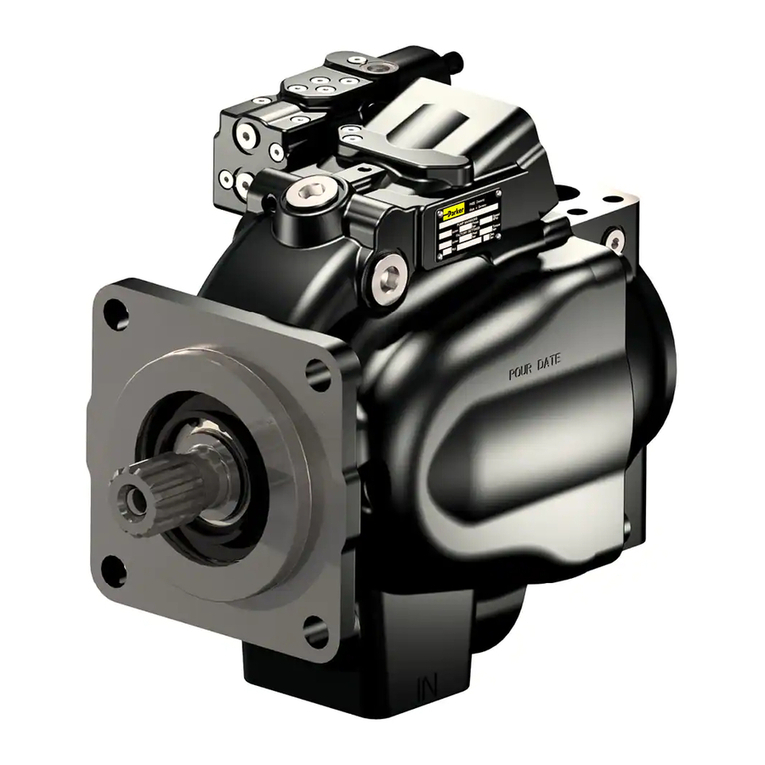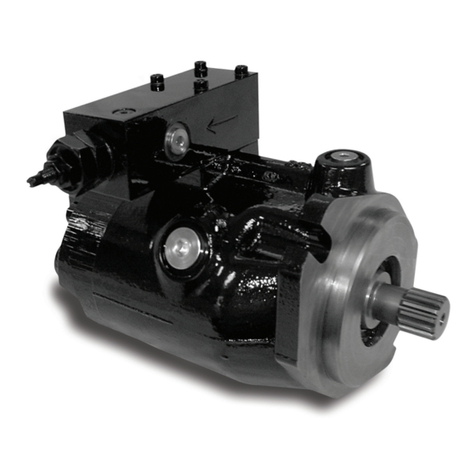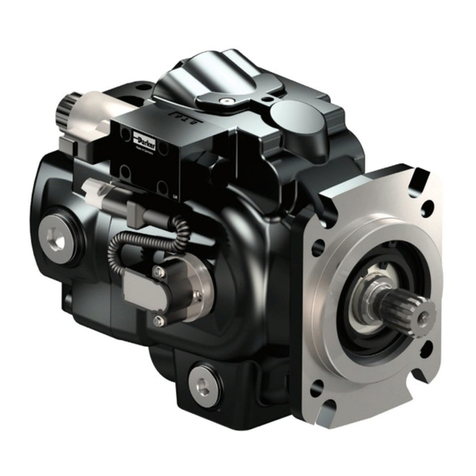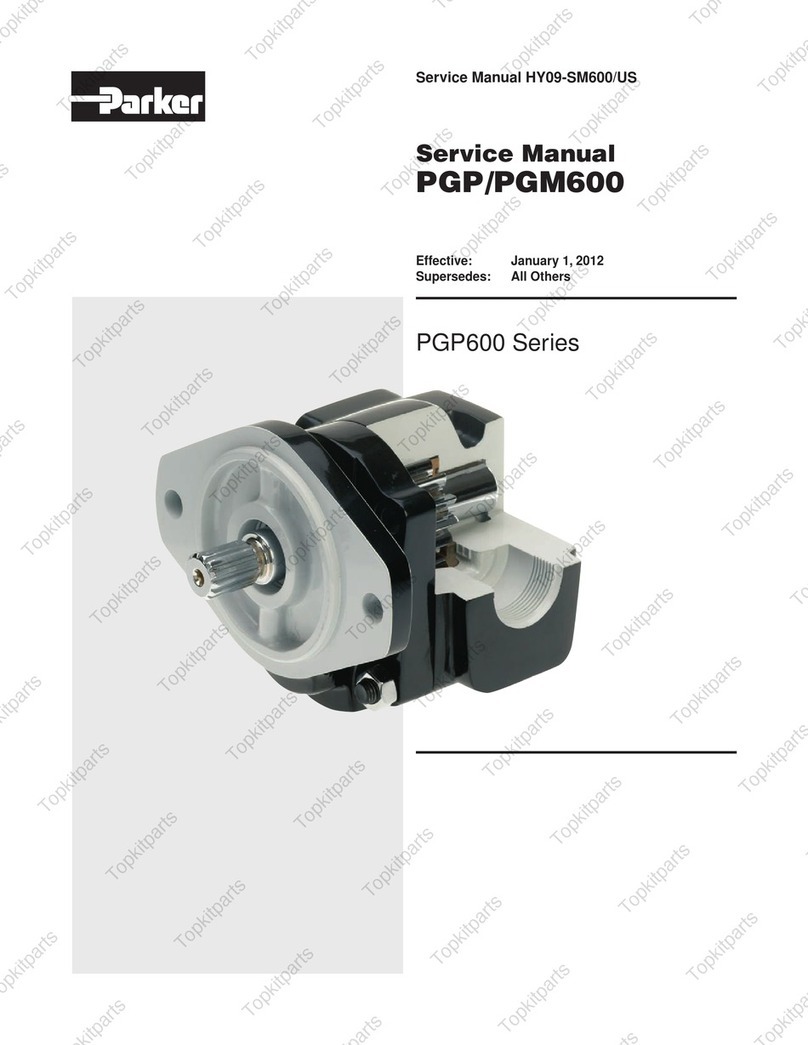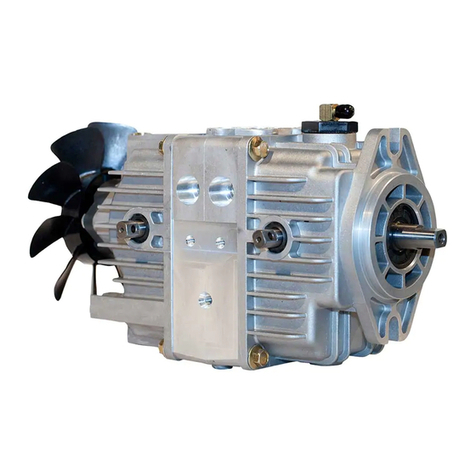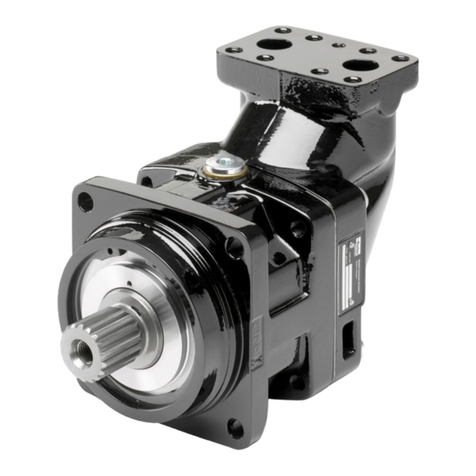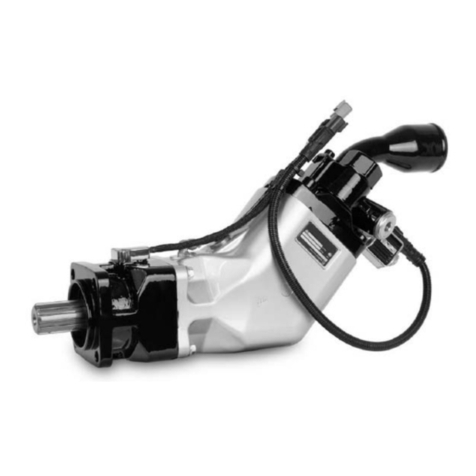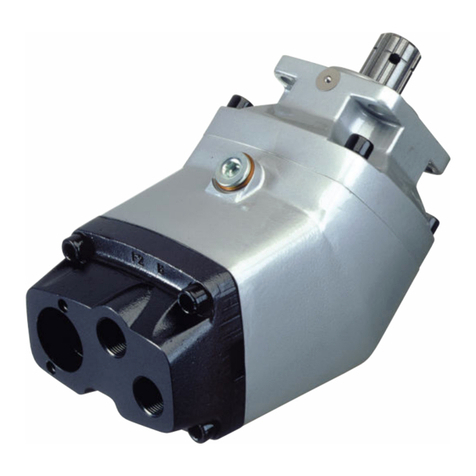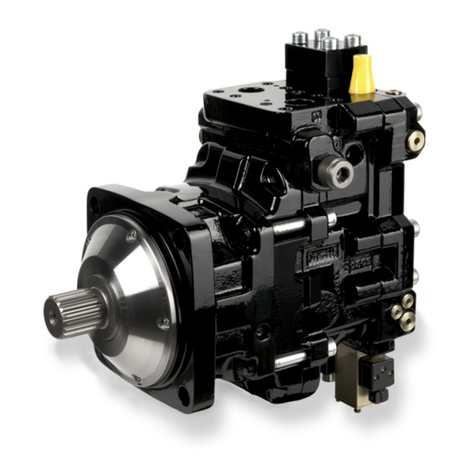
Page 6 / Bulletin 22-00 A
Adjustment
Adjustment of a regulator’s set
point requires that the pressure
being controlled be monitored by
an accurate pressure gauge. Before
making any adjustments, the seal
cap must be removed. In all cases
where the regulator is administering
a pressure condition and a solenoid
feature is not overriding that function,
and the ow is in the normal direction,
turning the adjusting stem in the
(i.e. clockwise) direction will raise
the set point, and turning it (i.e.
counterclockwise) direction will lower
the set point. One complete turn of
the adjusting screw will change the set
point 0.69 bar (10 psig).
Depending on system responses, the
gauge may reect some delay before
change in set point actually results
in a change in the pressure being
maintained. is can also sometimes
be observed following the energization
or de-energization of the solenoid
features.
e pressure gauge can be connected
to the gauge port on the inlet side of
the regulator.
Always re-tighten the seal cap once
adjustments are complete.
Installation
All regulators are packed for a
maximum protection. Unpack
carefully. Check the carton to make
sure all items are unpacked. Save the
enclosed instruction for the installer
and eventual user.
Do not remove the protective
coverings from the inlet and outlet
of the regulator until the regulator
is ready to be installed. Protect the
inside of the regulator from dirt and
chips before and during installation.
e valves should not be disassembled
before welding. is grade of stainless
steel is a poor conductor of heat and
conventional weld processes (stick,
MIG, and TIG) do not create enough
heat that transfers to the valve’s
internal parts that could be aected.
Contractors need to follow a WPS
(Welding Procedure Specication) for
all welding. e procedure must be
qualied and welder doing the weld
qualied to perform that procedure.
For welding the stainless steel 304L
body to carbon steel pipe, E309L and
ER309L-15,-16, or -17 ller metal
is a common choice. Contractors
can develop their own standards
and have them qualied based on
the equipment they use and the
environment they may encounter.
e codes applicable to the welding
of socket weld valves require that the
pipe be inserted into the socket until
bottomed against the stop. e pipe is
then to be backed out approximately
1/16 of an inch before welding. Use
of welding rings is optional, but
recommended for butt weld valves.
ey help alignment, control gap for
full penetration welding, and reduce
welding debris entry.
Note: When welding carbon steel
and stainless steel the welded joint
should be painted to prevent galvanic
corrosion.
Set Point
Range
Approx. Pressure
Change per Turn of
Adjusting Screw
Factory Set Point
(unless otherwise
specified)
V: 500mm hg to 8.3 bar
(20” hg to 120 psig)
0.7 bar
(10 psi)
2.8 bar
(40 psig)
D: 5.2 to 19.3 bar
( 75 to 280 psig)
4.1 bar
(60 psi)
9.7 bar
(140 psig)
A4W Pressure Setting Ranges
Suffix Description Typical Application
A4WB Outlet Pressure Regulator
Electric Wide Open
Evaporator Pressure Regulator
Defrost Relief Regulator
Head Pressure Control
Heat Reclaim
Back Pressure Regulator
A4WS Outlet Pressure Regulator
Electric Shut-Off
Suffix Table
Socket welding where allowed is the
preferred connection. is connection
does help to reduce the amount of
welding debris in the piping system.
Welded valves may be installed in
horizontal or vertical pipelines. In a
horizontal pipeline the valve can be
mounted 90 degrees to either side
from the upright position. ese
valves can not exceed below the
3-O’clock and 9-O’clock positions. It is
important that the valves are installed
in the correct direction of ow,
because these regulators can control
ow in one only direction.
Before putting valves into service, all
pipe connections, valve seats, bonnet
seals, and stem seals should be tested
for leaks at pressure levels called for in
appropriate codes.
Manual Opening Stem
ese valves are equipped with a
pressure driven manual opening
system versus the mechanical screw
thread mechanism. A small valve is
opened that allows the inlet pressure
trapped above the piston to escape
via passage (M), through the port plug
and into passage (T), the valve outlet.
e small valve stem is located on the
side of the port plate as shown in the
A4W manual opening stem cross-
section diagram. Using a screw driver,
turn the CCW to manually open the
valve. Turn the stem CW to put the
valve back into automatic operation.
ere must be at least a 2 psi pressure
drop across the valve to completely
open the valve. If there is less than
a 2 psi pressure dierence available
the valve will be partially open and at
some point less than 2 psi will close.
ere is still a leak path between the
valve inlet and outlet through the
manual opening valve for pump down
purposes.

